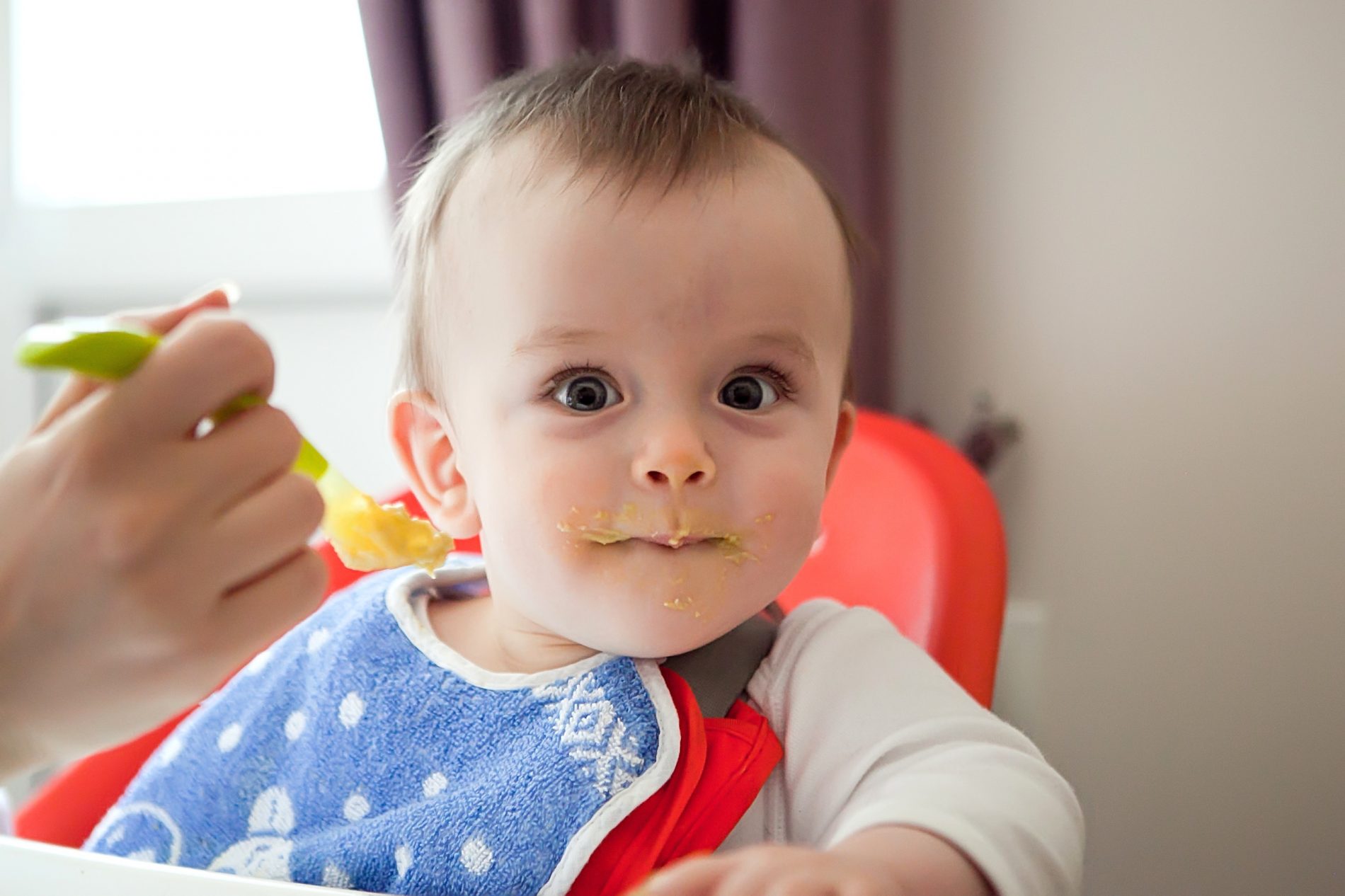Introducing solid foods to your growing baby’s diet is a huge milestone for both you as a parent, and your child. Up until now, meal preparation and consideration has been fairly straightforward. The options were limited to breastmilk or formula.
Now, the idea of introducing solid foods to your baby’s diet can be a daunting task because of conflicting information and the fear of developing severe food reactions or allergies.
In fact, food allergies are one of the most common types of allergies among babies and they first appear when introducing your child to solids. The most common food allergens are sugar, wheat, chocolate, lactose, peanut, milk, eggs, and strawberries. The allergic reactions vary according to the allergen. For example, strawberry allergy in babies causes itchy skin and dizziness, while sugar allergy symptoms are headache, runny nose, and cramping.
Being armed with solid information on how to best introduce solids to your baby’s diet will alleviate some of the worry and concern and will hopefully allow the transition to be smooth and rewarding.
How Do You Know If Your Baby Is Ready For Solid Foods?
There are several milestone markers that you will start to notice that indicate that your baby is ready to start introducing solid foods in their diet.
Most often these milestones begin to present themselves when the child is around six months of age, however every child will be slightly different.
It is crucially important that your baby can hold his/her own head up and can sit upright in a highchair before ever considering the option of solid foods.
They will also need to have developed the ability to move their tongue in a way that would allow them to move the food to the back of their mouth and swallow.
Finally, you may have noticed that your baby takes interest in what you are eating and reaches out to touch or smell your food.
Once you feel that your baby has reached all of these milestones, it is time to think about what solid food to feed your child first.
My Doctor Is Recommending That I Start My Baby Off With Rice Cereal (Pablum). Is That Really The Best Option?
Let’s think for a moment about the most vitamin and nutrient dense food groups.
Do processed grains come to mind? No, of course they don’t.
So then what food group should we be looking to? Fruits and vegetables, of course!
One of the simplest and most nutrient dense options to introduce as a first food is avocado. It requires no preparation whatsoever. Just cut it open, remove the pit, mash up the flesh (much like you would mash a banana) and serve. It can also be easily mixed with a bit of breast milk or formula to change the consistency and make it easier for your baby to consume.
Solid Food Quick Tips
- Introduce one food at a time with a couple of days in between foods to watch for potential food reactions and to allow your baby’s palette to develop.
- Hold off on introducing sweet fruits and vegetables until your baby has developed a palette for the more bland fruits and vegetables.
- Keep a food diary for the first month to record likes, dislikes, reactions, etc so you have a record to look back on.
- Be patient. This is a learning curve for both you and your baby. If your baby loses interest don’t force the issue. Maintain your regular breastfeeding/formula schedule and slowly introduce solid foods as a supplement to their diet.
- Take the stress out of meal times. The attitude you have during feeding times will stick with your baby for life, so maintain a positive approach and don’t get frustrated.
Jo-Anne Richardson has almost a decade of experience managing a chiropractic office and educating patients on how chiropractic can allow your body to express optimal health. She is a Registered Holistic Nutritionist and holds a Degree in Communications. She loves to experiment with raw vegan recipes, loves to salsa dance, travel and learn new holistic health information to share tips with everyone who visits the office.

